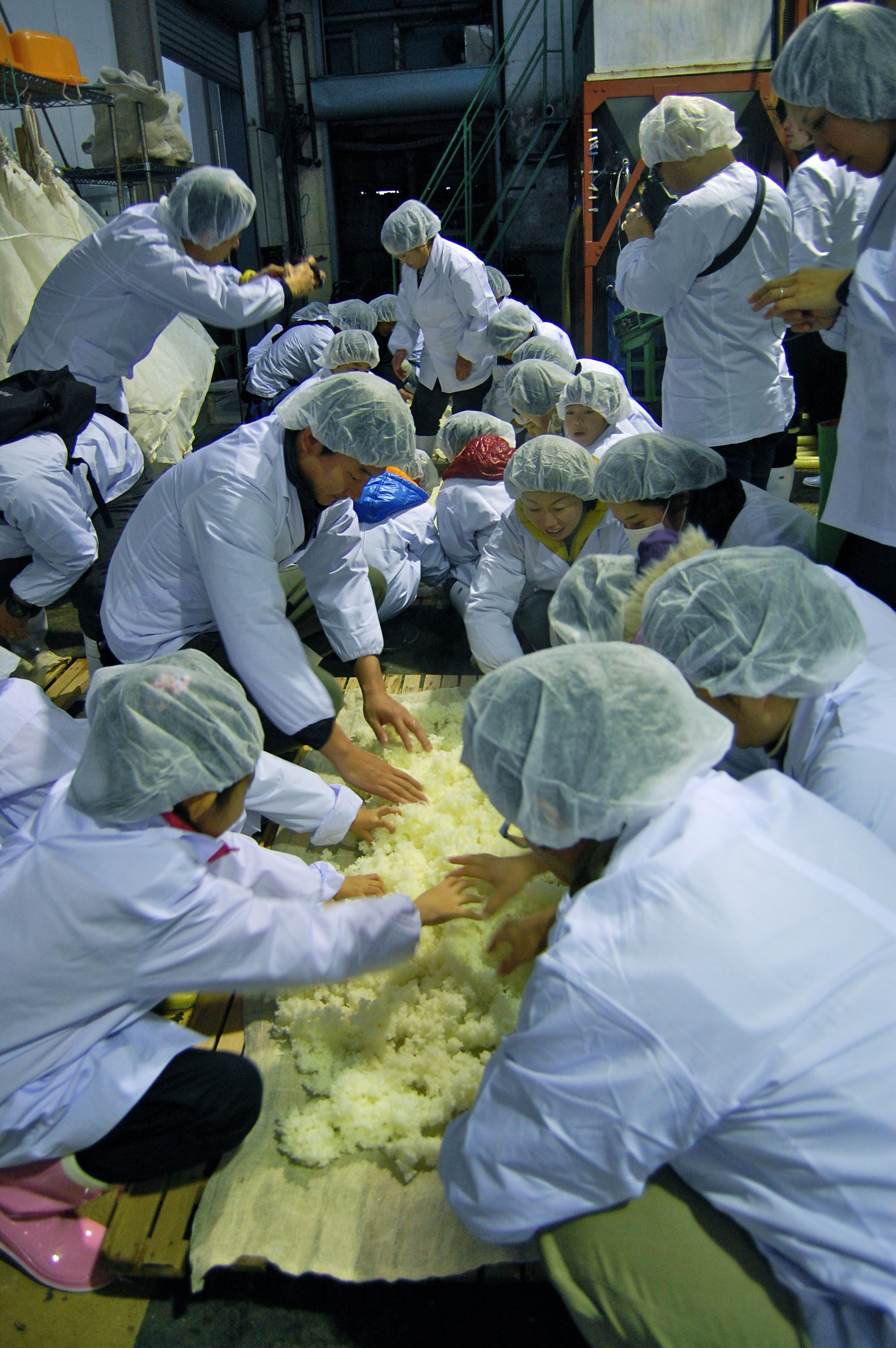The thermometer inside the brewing facility at Shimazaki Shuzo registered a chilly 8 degrees. Like everyone else who had signed up to take part in the final sake-making session of the Karasuyama Taiken (www.karasuyama-taiken.jp), I was dressed for work — in a thin white jacket that resembled a lab coat, white plastic boots and a gauzy hairnet. While this uniform was neither the warmest nor the most fashionable of ensembles, it ensured that none of us would compromise the brewery's hygiene standards.
This was my third visit since May to Shimazaki Shuzo in Tochigi Prefecture. The gohyakumangoku rice we'd planted in the spring and harvested in the fall was now ready to be turned into sake. After a brief overview on the brewing process, around 60 of us (a second session was scheduled for the afternoon for the other half of the group) filed into the main building, where rice was steaming in the koshiki, a rice cooker large enough for a few people to stand in. Clouds of steam rose from the vat, and the cloth tarp covering the koshiki puffed up like a giant, terrestrial jellyfish.
As brewery president Kenichi Shimazaki pulled back the tarp, the delicious aroma of freshly cooked rice filled the space. Shimazaki scooped a mound of rice from the pot with a shovel, tasted it, and then held it out to be sampled. The children, clearly ready for a snack at 11 a.m., swarmed around him like ants at a picnic.

















With your current subscription plan you can comment on stories. However, before writing your first comment, please create a display name in the Profile section of your subscriber account page.